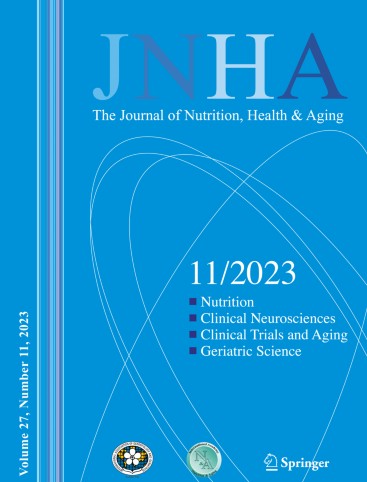The association between continuing work after retirement and the incidence of frailty: evidence from the China health and retirement longitudinal study
IF 4.3
3区 医学
Q1 GERIATRICS & GERONTOLOGY
引用次数: 0
Abstract
Objectives
Retirement represents a significant life transition, with post-retirement status serving as a pivotal aspect of aging research. Despite its potential significance, little research has delved into the relationship between continuing work after retirement and the frailty. This study aims to investigate the association between continuing work after retirement and the incidence of frailty among older individuals.
Design
A nationally representative cohort study.
Setting and participants
We utilized data from 4 waves (2011, 2013, 2015 and 2018) of the China Health and Retirement Longitudinal Study and a total of 5,960 participants were included in the study after applying specific inclusion and exclusion criteria.
Methods
Frailty was assessed using a Frailty Index. To balance baseline covariates between workers (n = 3,170) and non-workers (n = 2,790), we employed inverse propensity of treatment weighting. The relationship between work status and the incidence of frailty was examined using Cox proportional hazards analysis, with results reported as hazard ratios and 95% confidence intervals.
Results
A total of 5,960 participants (mean age 64 years; 42.1% male) were included in the analysis. Over a mean follow-up of 6.9 years, 2,105 cases of frailty were identified. In the cohort analysis, following adjustment using the inverse propensity of treatment weighting (IPTW), continuing work after retirement showed a negative association with frailty incidence, with an HR of 0.72 (95% CI, 0.65−0.79). Subgroup analysis revealed a more significant protective effect of continuing work beyond retirement age among individuals aged 65 or older, males, smokers, and those with limited social activities.
Conclusions
In summary, this study identified a significant association between continuing work after retirement and a decreased risk of frailty. The findings underscore the potential benefits of policies promoting social engagement and extending working life in enhancing the quality of life for the aging population.
退休后继续工作与虚弱发生率之间的关系:来自中国健康与退休纵向研究的证据。
目的:退休是人生的一个重要转折,退休后的状态是老龄化研究的一个关键方面。尽管退休后继续工作具有重要的潜在意义,但很少有研究深入探讨退休后继续工作与体弱之间的关系。本研究旨在调查退休后继续工作与老年人体弱发生率之间的关系:设计:一项具有全国代表性的队列研究:我们利用了中国健康与退休纵向研究的 4 个波次(2011、2013、2015 和 2018 年)的数据,在应用特定的纳入和排除标准后,共有 5960 名参与者被纳入研究:采用虚弱指数评估虚弱程度。为了平衡工人(n = 3,170 人)和非工人(n = 2,790 人)的基线协变量,我们采用了反倾向治疗加权法。我们采用 Cox 比例危险分析法研究了工作状况与虚弱发生率之间的关系,并以危险比和 95% 置信区间的形式报告了结果:共有 5960 名参与者(平均年龄 64 岁;42.1% 为男性)参与了分析。在平均 6.9 年的随访期间,共发现 2,105 例虚弱病例。在队列分析中,使用反倾向治疗加权(IPTW)进行调整后,退休后继续工作与虚弱发生率呈负相关,HR 为 0.72(95% CI,0.65-0.79)。亚组分析显示,在65岁或65岁以上、男性、吸烟者和社会活动有限的人群中,退休后继续工作具有更显著的保护作用:总之,本研究发现退休后继续工作与降低虚弱风险之间存在显著关联。研究结果强调了促进社会参与和延长工作年限的政策对提高老龄人口生活质量的潜在益处。
本文章由计算机程序翻译,如有差异,请以英文原文为准。
求助全文
约1分钟内获得全文
求助全文
来源期刊
CiteScore
7.80
自引率
3.40%
发文量
136
审稿时长
4-8 weeks
期刊介绍:
There is increasing scientific and clinical interest in the interactions of nutrition and health as part of the aging process. This interest is due to the important role that nutrition plays throughout the life span. This role affects the growth and development of the body during childhood, affects the risk of acute and chronic diseases, the maintenance of physiological processes and the biological process of aging. A major aim of "The Journal of Nutrition, Health & Aging" is to contribute to the improvement of knowledge regarding the relationships between nutrition and the aging process from birth to old age.

 求助内容:
求助内容: 应助结果提醒方式:
应助结果提醒方式:


